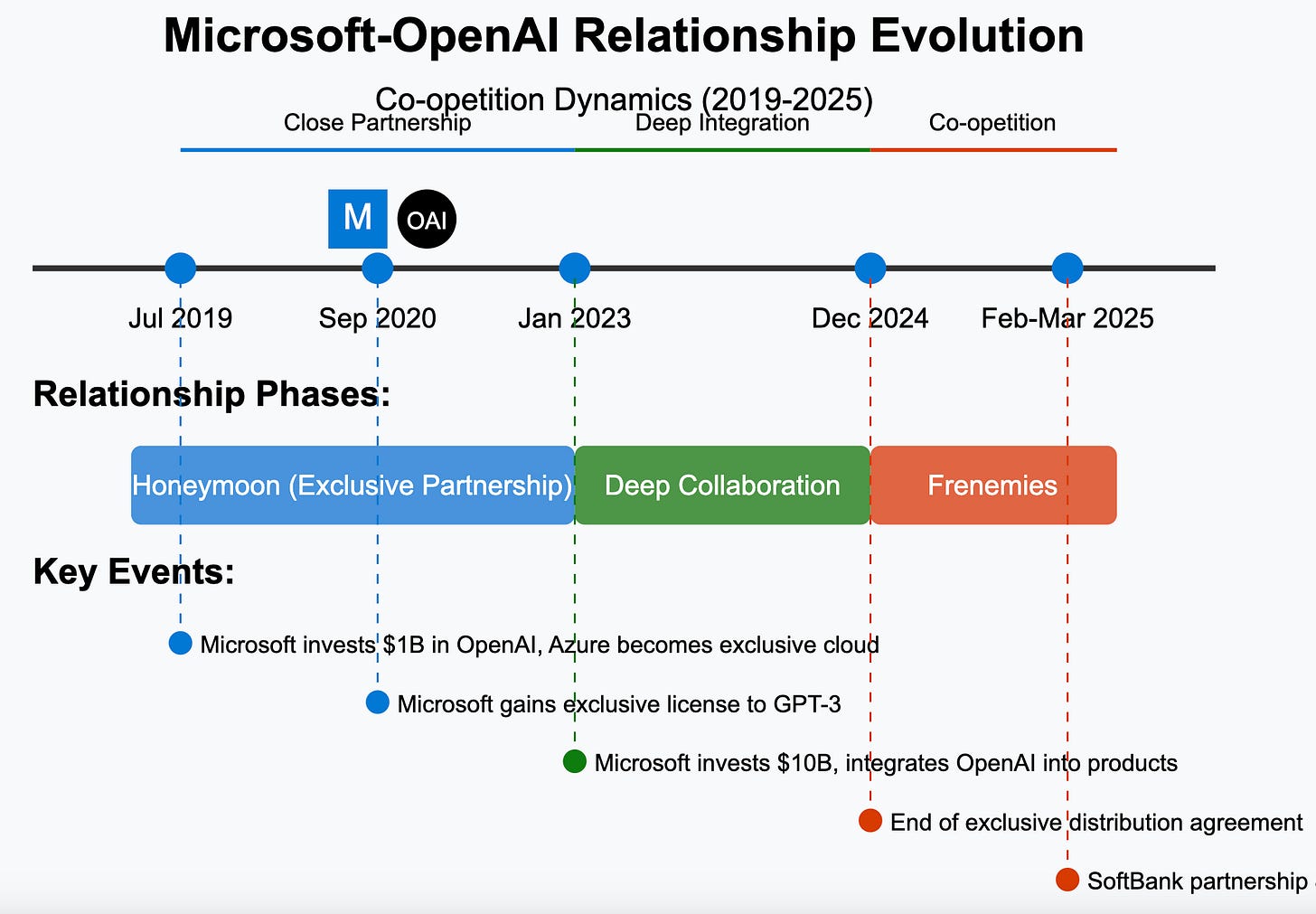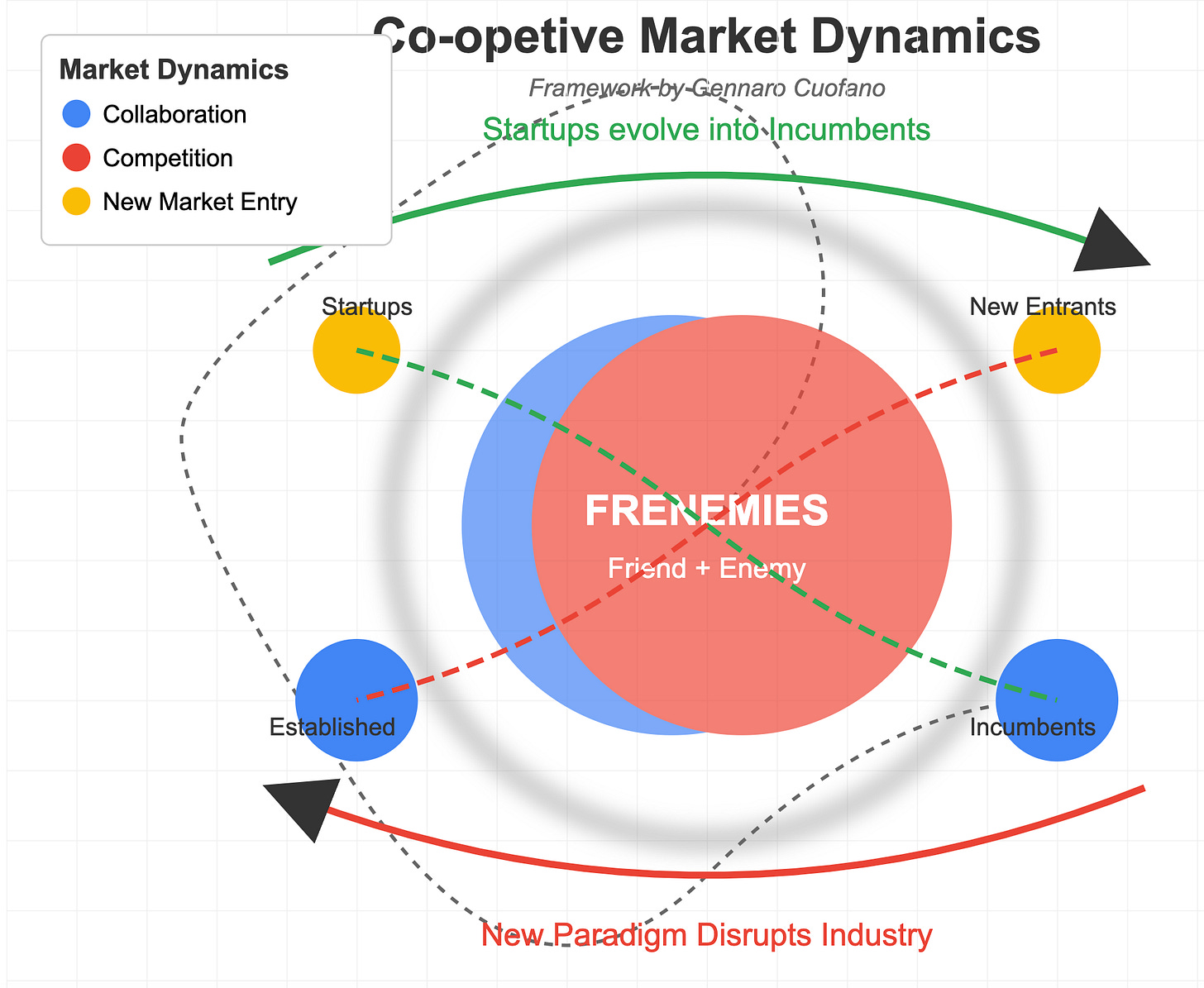Coopetition in AI: Microsoft-OpenAI, From Partners to Frenemies
In tech, co-opetition is the norm.
Technology markets operate with complex dynamics and blurred lines, where rivals often have to collaborate, turning "friends and enemies" into "frenemies."
For instance, the Microsoft-OpenAI partnership, which is turning into frenemy territory, is the most interesting case in AI.
Back to co-opetition, companies may cooperate in some areas in these new markets while competing fiercely in others.
Startups evolve into incumbents, shaping the game's rules—until a new technological paradigm disrupts the entire industry, resetting the cycle.
Thus, in the rapidly evolving landscape of technology markets, traditional notions of competition give way to a more nuanced dynamic known as co-opetition.
Defining Co-opetition
Co-opetition is characterized by the interplay of collaboration and competition, leading to the emergence of "frenemies"—entities that are both friends and enemies.
In technology markets, this dynamic is particularly pronounced due to the rapid pace of innovation and the need for companies to leverage shared resources and expertise.
Let’s review some core concepts that comprise the co-opetition dynamics.
Market Dynamics of Co-Opetition:
Collaboration: Companies collaborate to share knowledge, resources, and risks. This collaboration can lead to joint ventures, partnerships, and alliances that drive innovation and efficiency.
Competition: Simultaneously, companies compete for market share, technological superiority, and customer loyalty. This competitive drive fuels innovation and pushes companies to improve their offerings continuously.
New Market Entry: Startups and new entrants bring fresh ideas and disruptive technologies, challenging established players and driving market evolution.
What does it mean to be Frenemies?
At the intersection of collaboration and competition lies the concept of "frenemies." These entities maintain a delicate balance, cooperating in some areas while competing in others. This dual relationship allows companies to benefit from shared strengths while still pursuing individual strategic goals.
Among which market participants arise these dynamics?
Startups: New companies that introduce innovative solutions and challenge existing market norms.
New Entrants: Emerging players that bring fresh perspectives and technologies to the market.
Established Companies: Firms with a strong market presence that have established customer bases and operational efficiencies.
Incumbents: Dominant players that have significant influence over market dynamics and industry standards.
Navigating Co-Opetitive Market Dynamics
In co-opetitive markets, companies must navigate both collaborative and competitive strategies.
This requires a nuanced approach to partnerships, alliances, and competitive positioning.
Successful companies in these markets can effectively balance collaboration and competition, leveraging strengths to drive innovation and growth.
The Microsoft-OpenAI former honeymoon turned into a loose relationship, now entering the frenemy stage, offering the perfect picture.
The End of Microsoft-OpenAI Exclusive Partnership
The Microsoft-OpenAI partnership is maturing into something else.



